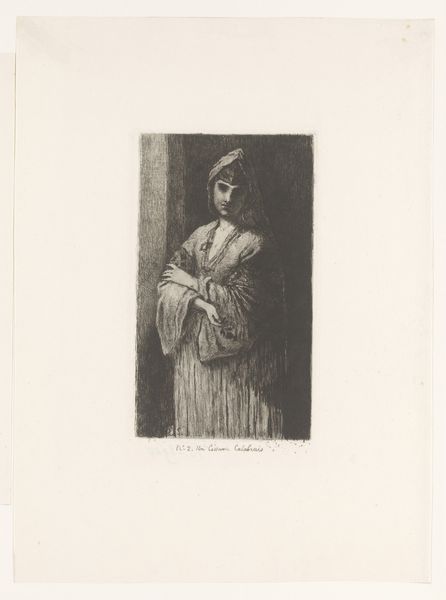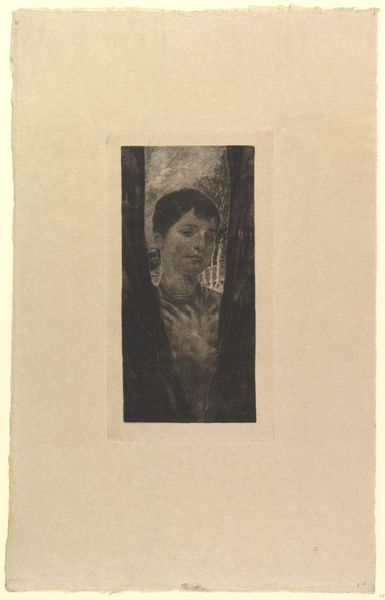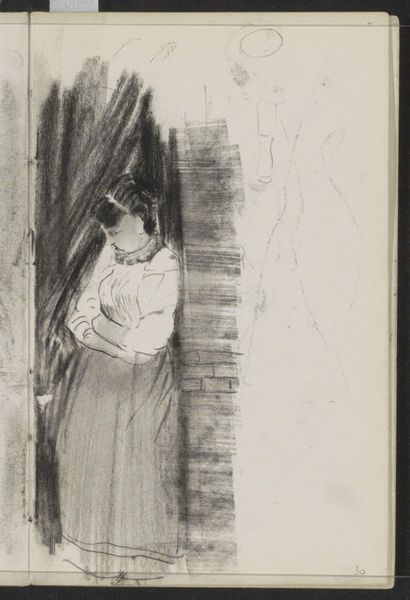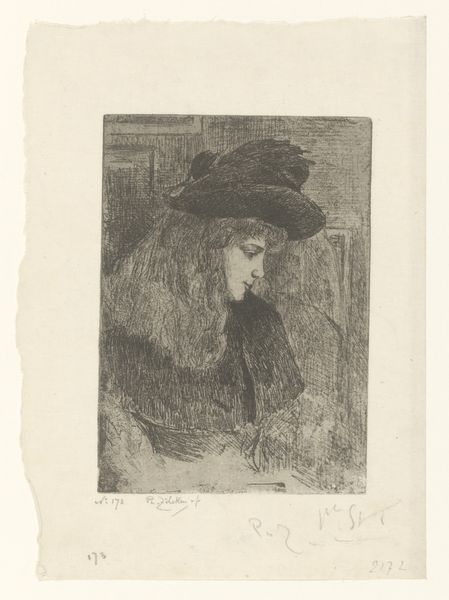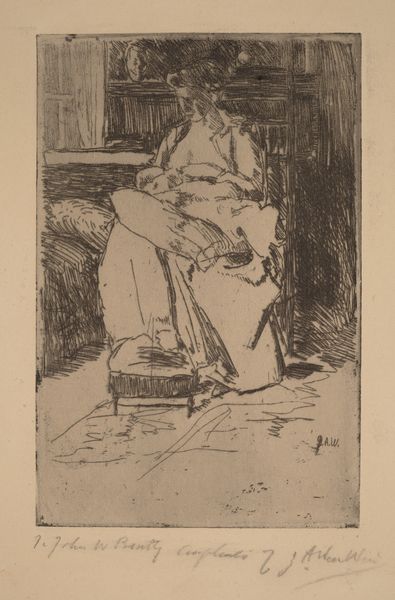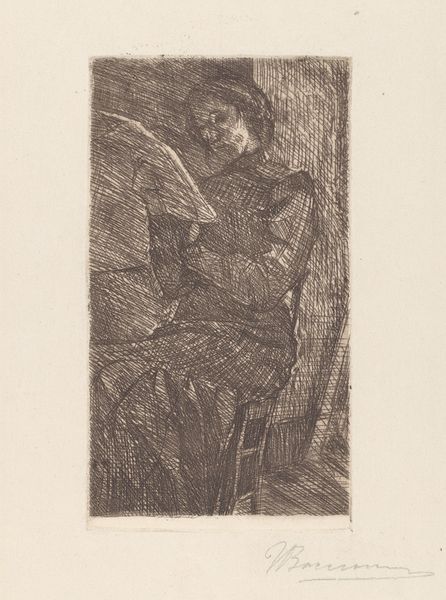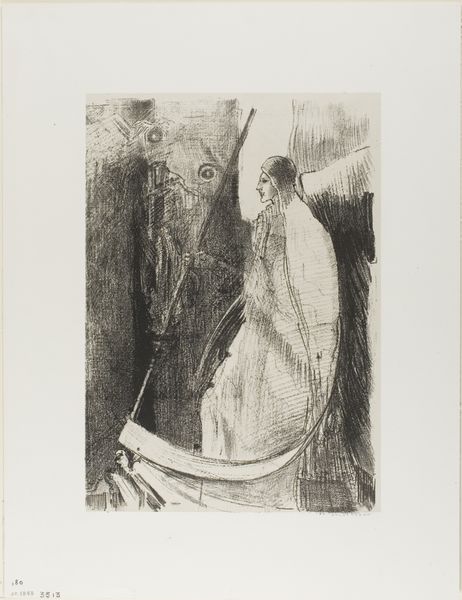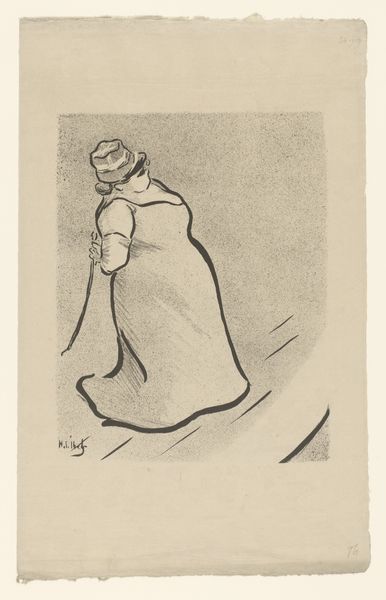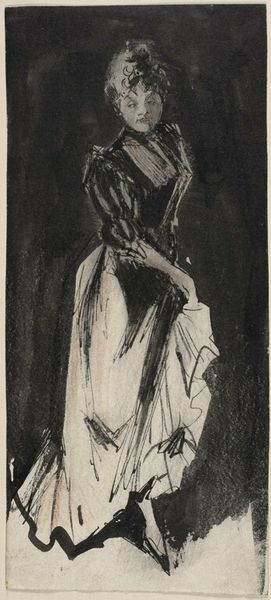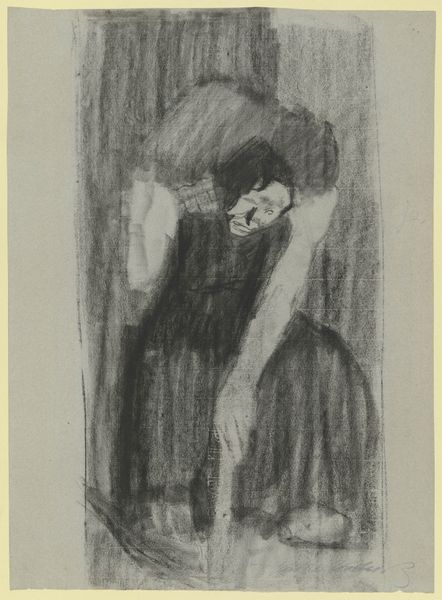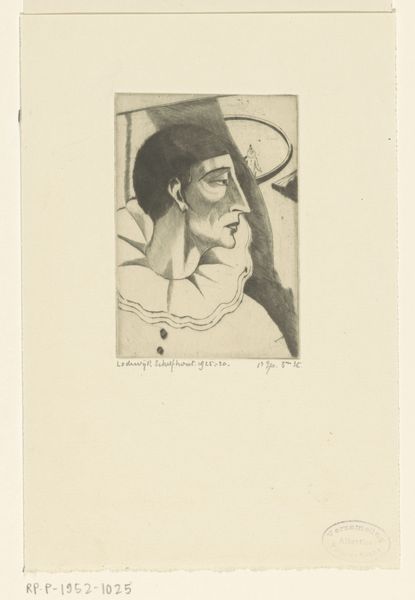
drawing, print
#
drawing
#
light pencil work
#
shading to add clarity
# print
#
pencil sketch
#
old engraving style
#
personal sketchbook
#
ink drawing experimentation
#
pen-ink sketch
#
france
#
sketchbook drawing
#
pencil work
#
sketchbook art
Dimensions: Sheet: 17 5/16 × 12 5/8 in. (44 × 32 cm) Image: 10 5/8 × 7 7/8 in. (27 × 20 cm)
Copyright: Public Domain
Henri de Toulouse-Lautrec made this lithograph of Madame Abdala as part of his "Le Café Concert" series. Lithography is an inherently social process, relying on collaboration between artist and printer, and the mechanization of image production. Here, the material properties of lithography – the flat, smooth surface of the stone, and the greasy crayon used to create the image – result in a stark contrast. The bold use of black ink, combined with areas of untouched paper, makes the artwork eye-catching. Look closely, and you can see the artist's hand at work in the textural variation and layering of tones. Toulouse-Lautrec engaged with the skilled tradition of printmaking, a practice closely tied to the rise of mass media and consumer culture in the 19th century. The very nature of lithography allowed artists to circulate images widely, connecting them to a broader audience. By focusing on the materials, making, and social context of "Madame Abdala," we can better appreciate Toulouse-Lautrec's contribution to the democratization of art.
Comments
No comments
Be the first to comment and join the conversation on the ultimate creative platform.
